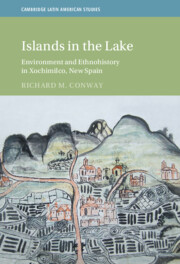Raised field agriculture in the Basin of Mexico was a highly sustainable farming method that did not depend upon centralised political control. Study of the chinampa system around the Early and Middle Postclassic city of Xaltocan through a combination of remote sensing, GIS, targeted excavation and AMS dating has revealed an extensive area of raised fields that was abandoned when Xaltocan was conquered by an alliance of powerful neighbours during the fourteenth century AD. The rise and abandonment of the chinampa system were thus directly linked to the political economy of the city-state. The failure to revive the raised field systems in the following Aztec period can also be attributed to the impact of political, economic and ecological factors.


